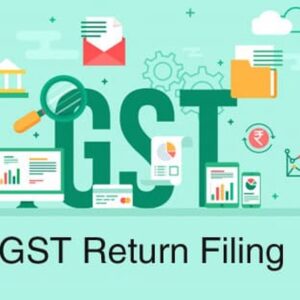Description
GST Registration – India
This is complete Online Process so once you place order our executive will be in constant touch with you until we register your firm
- PAN card.
- Proof of business registration.
- Proof of identity.
- Photographs.
- Address proof of persons in charge.
- Business’s address proof.
- Bank account statements.
If you want to file GST Return you can click here
So,Lets us undertsand GST Registration process and requirement in india.
GST Registration in India
Goods and Services Tax (GST) is a unified indirect tax system that replaced multiple taxes such as VAT, central excise duty, and service tax. GST registration is mandatory for certain businesses in India that meet the turnover threshold criteria. In this blog, we will provide an overview of GST registration in India, including eligibility, process, and important considerations.
Eligibility for GST Registration:
Businesses engaged in the supply of goods or services with an aggregate turnover exceeding the prescribed threshold must register for GST. The threshold limits are as follows:
- For businesses operating in most states: Aggregate turnover of Rs. 40 lakhs or above in a financial year.
- For businesses in the northeastern states and Himachal Pradesh: Aggregate turnover of Rs. 20 lakhs or above in a financial year.
- Additionally, specific categories of businesses, such as e-commerce operators, inter-state suppliers, and those liable to pay reverse charge, need to register for GST regardless of their turnover.
Types of GST Registration: There are three types of GST registration in India:
1. Regular Registration:
For businesses exceeding the turnover threshold, this is the standard registration type.
2. Composition Scheme:
Businesses with a turnover up to Rs. 1.5 crore can opt for the composition scheme, so which offers certain relaxations and requires a lower tax rate.
3. Casual Taxable Person:
Individuals or businesses making occasional taxable supplies in a different state than their regular place of business are categorized as casual taxable persons.
So now Lets understand, GST Registration Process in detail
GST Registration Process:
The process for GST registration involves the following steps:
Online Application:
Visit the GST portal (www.gst.gov.in) and complete the registration application by providing the necessary details.
PAN Verification:
The PAN details provided during registration are verified with the Income Tax Department’s database.
Mobile and Email Verification:
A one-time password (OTP) is sent to the registered mobile number and email address for verification.
Business Details:
Provide information regarding the nature of business, goods or services supplied, and bank account details.
Supporting Documents:
Upload required documents, such as PAN card, proof of address, bank statements, and photographs of authorized signatories.
Application Submission:
After completing the application, submit it on the GST portal.
ARN Generation:
An Application Reference Number (ARN) is generated, which can be used to track the status of the registration application.
Verification and Approval:
Finally,The GST officer reviews the application and may request additional information or documents if necessary. Upon verification, the GSTIN (GST Identification Number) is issued.
Compliance Requirements after GST Registration:
=>Once registered under GST, businesses are required to comply with certain obligations, such as follows:
Filing of GST Returns:
Regular taxpayers need to file monthly, quarterly, or annual GST returns, depending on their turnover. The returns include details of sales, purchases, and tax paid.
Payment of GST:
Pay GST liability on time and maintain proper records of transactions, invoices, and other relevant documents.
Input Tax Credit:
Accurately maintain records of input tax paid on purchases to claim input tax credit against the output tax liability.
Conclusion: So GST registration is a crucial requirement for businesses in India meeting the prescribed turnover threshold. By understanding the eligibility criteria, following the registration process, and complying with the subsequent GST obligations, businesses can operate in accordance with the GST framework and avoid penalties. It is advisable to consult a tax professional









Reviews
There are no reviews yet.